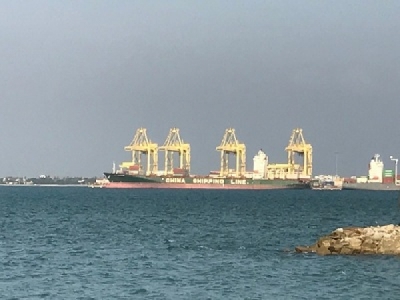
Posted on February 27, 2018
By Vincent Wee, Seatrade Maritime News
MMC Corp-owned Penang Port is allocating MYR180m ($46m) for expansion plans this year to boost capacity to 2.8m teu from 2m teu currently.
Local media quoted Penang Port ceo Sasedharan Vasudevan as saying that capex, which will be internally funded, for the first phase expansion, for berth strengthening and purchase of two quay cranes to enhance the port’s operational capacity has been approved.
“We are still at the designing and consulting stages with engineers. The expansion includes widening and strengthening the berth spaces at the terminal,” he said, adding that the bulk of the capex will be allocated to the container terminal business, which has seen growing demand.
“The expansion will eventually allow bigger vessels docking and increase throughput capacity,” he said.
Sasedharan said dredging work will increase channel depth up to 11.5m from the current depth of about 11m, allowing the port operator to expand the vessel size calling its container terminal.
“We believe if the growing trend continues, we will hit throughput of 2.2m or 2.3m teu in the next four to five years. However, we have yet to fill up the capacity. We have to start the work now to meet future demand,” he added.
Sasedharan said the expansion work will take between 18 months and 20 months to complete and is expected to start by the third quarter of this year.
“We have done 1.5m teu in 2017, representing about 6% growth year-on-year. We are currently studying the feasibility studies for the expansion plan,” he said.
Penang Port had allocated between MYR30m and MYR40m in 2016 for the purchase of container yard operations equipment.
The port aims to grow throughput by about 5% to 1.6m teu this year, said Sasedharan, adding that the port operator is still upbeat on increasing port automation.
He noted that volume growth last year was driven by Southern Thailand which made up about 38% of volumes, while organic growth from Northern Peninsular Malaysia also contributed to the higher throughput.
Sasedharan said 80% of Penang Port’s volumes were bound for the Far East mostly China, Japan and Korea, while the remaining 20% went to the Middle East and other markets.
Source: Seatrade Maritime News





